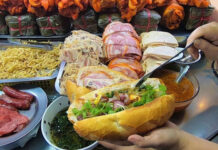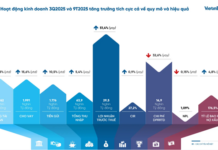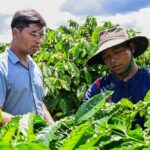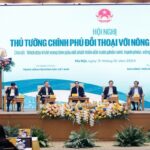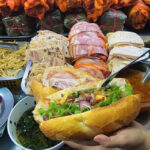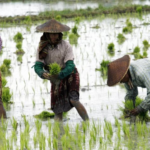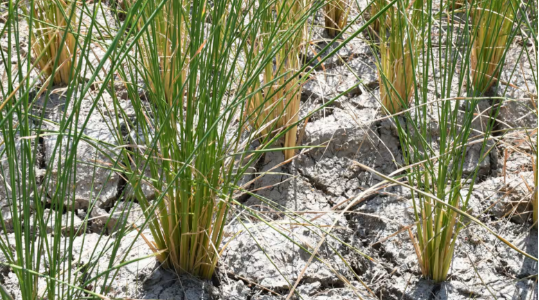
A severe heat wave that has been lingering throughout the summer is taking a toll on Japan’s agriculture and livestock industries, causing a surge in food prices and raising concerns about potential supply shortages.
According to the Japan Meteorological Agency, the average temperature in July reached its highest level since the country started keeping records in 1898. Precipitation in many key agricultural areas has also significantly decreased, falling 13% below average in the Tohoku region and 8% in Hokuriku, the lowest since 1946.
In Niigata Prefecture, a major rice-producing area, drought is causing rice paddies to crack and crops to wither. The Echigo Joetsu Agricultural Cooperative has reported that the area has received almost no rainfall for a month, putting rice at risk of failing to head out if it doesn’t receive water in early August.
In 2023, national rice production fell by about 80,000 tons due to heat waves. This year, the Ministry of Agriculture forecasts a rice yield of 7.35 million tons, an increase of 560,000 tons from last year. However, many farmers worry that the extreme weather will continue to decrease actual yields.
“Some fields are as hot as hot springs,” said a farmer in Yamagata Prefecture.
The heat wave has not only affected rice but also caused a sharp rise in prices for vegetables and fresh food in Japan. At the wholesale market in Tokyo, tomato prices reached 415 yen/kg (approximately $2.80) in July, a 10% increase from the previous year. Pumpkin prices rose by 20%, and bell peppers by 30%. Meanwhile, vegetable supply from producers has decreased by about 30%. The JA Iwate Furusato Agricultural Cooperative predicts that bell pepper production through the end of October will be about 20% lower.
Extreme weather has also impacted livestock farming. The price of high-quality domestic pork in Tokyo reached 866 yen/kg in July, the highest in 50 years. The heat causes animals to eat less, gain weight more slowly, and take longer to come to market, reducing overall supply.
The fisheries industry is also feeling the heat. Sea temperatures around Japan in July were up to 5°C higher than the annual average. In Kagoshima Prefecture, the wholesale price of farmed grouper has increased by 50% to 60% compared to last year due to high temperatures and algae blooms, which hinder adequate feeding and slow fish growth.
Economist Yoshiki Shinke of Dai-ichi Life estimates that if fruit and vegetable prices rise by 20%, Japanese households will have to spend an extra 2,000 yen/month (nearly $14). If prices go up by 30%, costs will increase by about 3,000 yen. “Since food is a necessity, people will keenly feel the impact of this price hike,” he said.
In response to the dire situation, Japan’s Ministry of Agriculture established a unit on July 30 to specifically address drought and heat waves. This unit will work with local governments to gather damage data and provide support, including grants for purchasing water pumps from the 2025 fiscal year.
Businesses and farmers are also adapting. Takii Co., Ltd. in Kyoto has developed a heat-resistant tomato variety that is less prone to discoloration. The Biratori Agricultural Cooperative in Hokkaido plans to double the cultivation area for this variety in 2025. In aquaculture, many farms have started using submerged cages, a technology popular in Northern Europe, to move fish to deeper, cooler waters.
The New 117 Million Ton Resource Trove: A Massive Windfall Awaits if Exports Take Off
The agricultural sector emits nearly 117 million tons of CO2 equivalent. This presents an opportunity to tap into a new resource reservoir by adopting farming practices that reduce emissions. By embracing sustainable methods, not only can we mitigate our environmental footprint, but we can also explore the potential of carbon credit exports, given the high demand for this commodity.
The Urban Pig Sty: A Proposal for Multi-Story Indoor Pig Farming
The Ministry of Agriculture and Environment has proposed a pilot project to the Prime Minister, suggesting a new model for pig farming in Vietnam: multi-story pig farms. This innovative approach aims to revolutionize the country’s agricultural landscape, offering a sustainable and modern solution to the industry’s challenges. With this proposal, the ministry envisions a future where pig farming thrives, embracing modernization while ensuring the industry’s longevity.
Revolutionizing the Agri-Food Industry: Targeting a $100 Billion Export Revenue for Vietnam’s Agricultural, Forestry, and Aquatic Products
Prime Minister Pham Minh Chinh has set an ambitious goal for Vietnam’s agricultural sector: to achieve $100 billion in exports of agricultural, forestry, and aquatic products in the coming years. To realize this vision, he has identified nine key areas that need attention and reform. These include institutional and policy frameworks, planning and infrastructure, access to capital and insurance, market development, scientific and technological advancements, skilled workforce training, rural cultural development, and, most importantly, understanding and addressing the needs and aspirations of Vietnam’s farmers.
The Green Revolution: 9 Key Issues for Developing an Eco-Friendly Agriculture, a Modern Rural Economy, and a Cultured Farmer
“On December 31st, Prime Minister Pham Minh Chinh chaired a conference with farmers, themed ‘Igniting the Aspiration for Prosperity to Build a Prosperous and Happy Nation; Confidently Stepping into the New Era.’ The Prime Minister emphasized the need to review and refine policies to accelerate and boost the goal of developing ecological agriculture, modern rural areas, and cultured farmers.”

